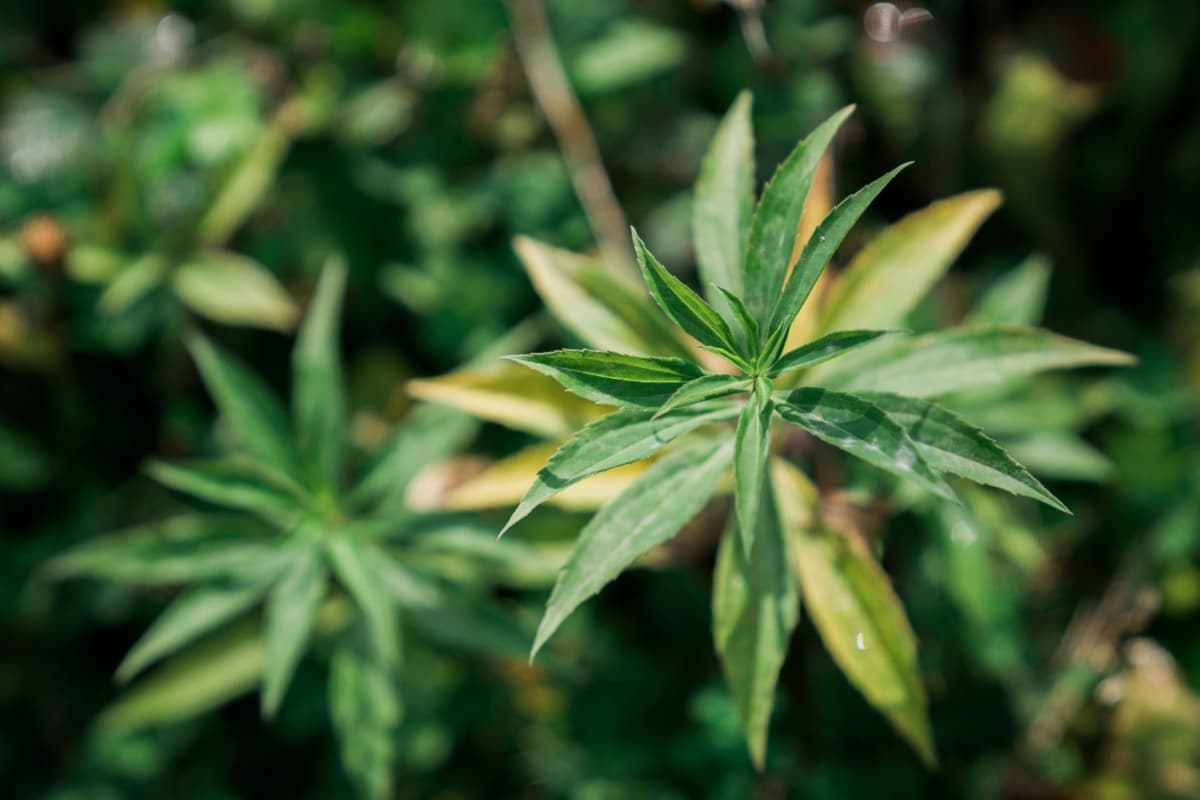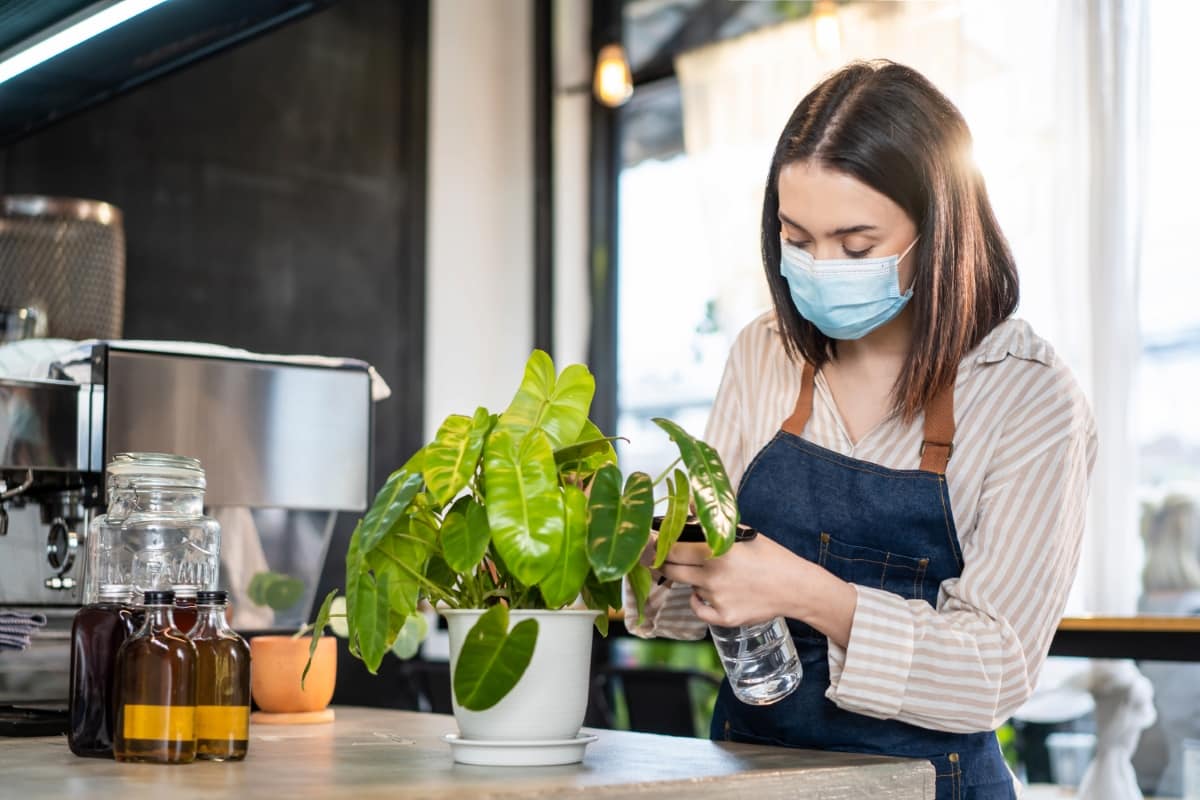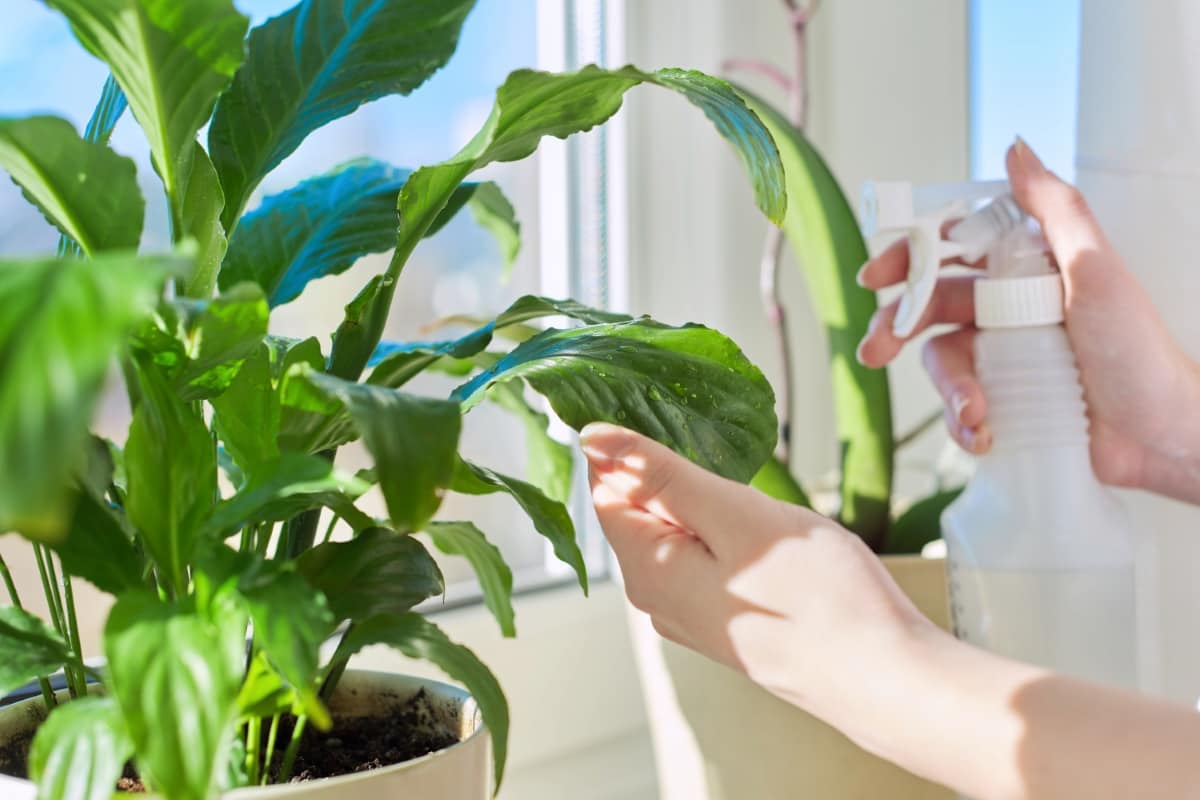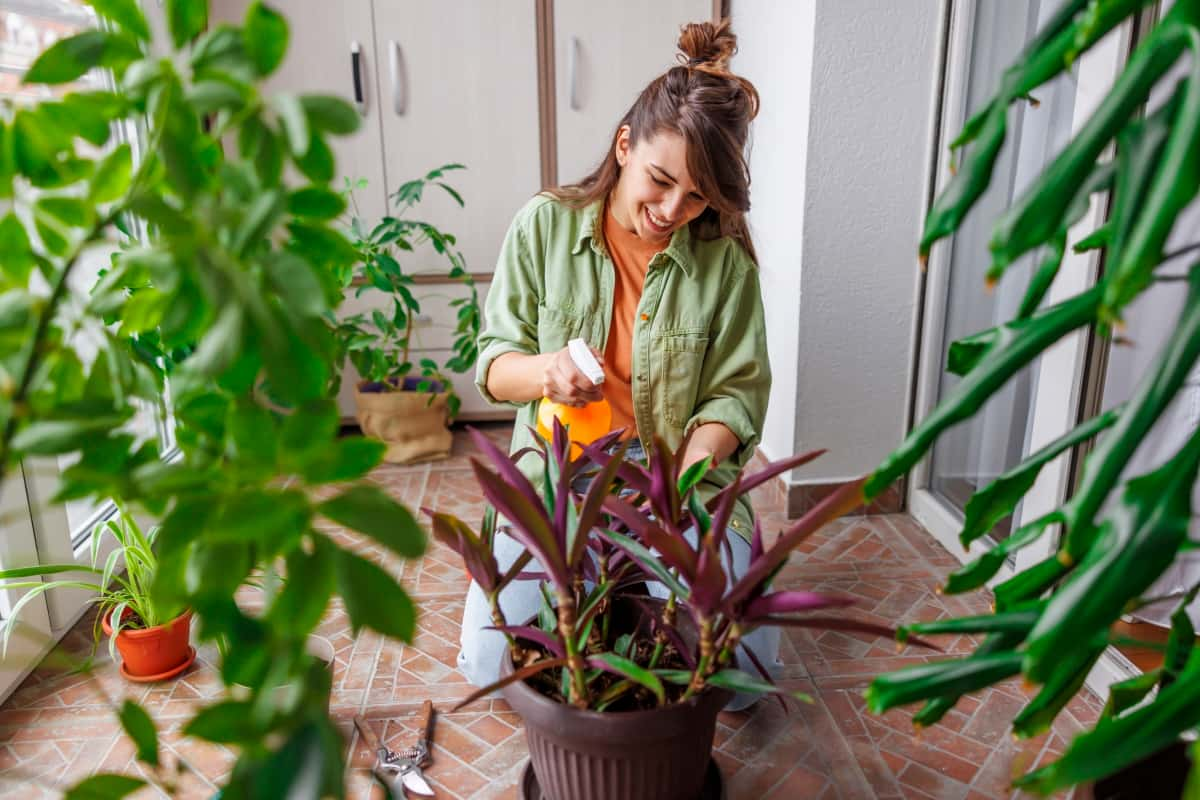“Mosaic virus, a common plant affliction, manifests in mottled leaves and stunted growth. Originating from infected tools or insects, early detection is vital. Symptoms include color distortions and leaf deformities. Prevention hinges on cleanliness and controlling pests. Treatment involves removing affected parts and using virus-free seeds. Regular monitoring and adopting hygienic gardening practices are key to keeping plants healthy.”

How to Prevent Mosaic Virus in Plants
Understanding Mosaic Virus in Plants: Causes and Types
Plant infections known as mosaic viruses produce a characteristic mottling pattern on leaves that often combines normal green patches with discolored ones. These viruses infect many different plant species. Transmission happens via direct touch or by insects like aphids. Two common varieties that target certain plant families are the cucumber mosaic virus and the tobacco mosaic virus.
While symptoms might vary, lower yields, distorted leaves, and stunted development are common ones. Insect vectors must be controlled, resistant plant cultivars must be used, and diseased plants must be removed. It is essential to comprehend these viruses in order to handle plant diseases effectively and guarantee a healthy crop yield.
How to Identify Mosaic Virus in Plants: Symptoms and Signs
A number of unique symptoms may distinguish plant mosaic viruses. On leaves, search for unusual patterns like streaks or mottling, which are usually seen in yellow and green colors. The virus’s name comes from the way these patterns resemble a mosaic. Additionally, leaves may twist, curl, or wrinkle. Infected plants may have stunted growth and decreased fruit output. There might be deformed flowers and scorched young stalks.
It’s crucial to remember that different plant species have different symptoms. If you think a plant may be affected, isolate it to stop the infection from spreading. Insects or mechanical devices like pruning scissors are typically responsible for mosaic virus transmission. It is essential to regularly check plants for these indicators in order to diagnose and treat mosaic virus early on.
How to Prevent Mosaic Virus in Plants: Best Management Practices
- Hygiene: Regularly sanitize your hands and tools to avoid spreading the virus.
- Resistant Varieties: Choose plant varieties known for their resistance to Mosaic Virus.
- Control Insects: Insects, especially aphids, can transmit the virus. Implement effective pest control strategies.
- Remove Infected Plants: Swiftly remove and dispose of any plants showing symptoms to prevent spread.
- Weed Management: Control weeds, as they can harbor the virus.
- Healthy Seedlings: Use only healthy, virus-free seedlings for planting.
- Crop Rotation: Rotate crops to reduce the chances of virus persistence in the soil.
Mosaic Virus Transmission and Infection Routes
The primary means of viral transmission for mosaic viruses, a class of plant viruses, is via insect vectors like leafhoppers and aphids that feed on plant sap. Additionally, these viruses may spread mechanically, such as during agricultural operations when healthy plants come into touch with the sap of an infected plant.
In case you missed it: Tobacco Streak Virus Management in Cotton: Disease Symptoms, Treatment, Chemical, Biological, Natural, and Organic Control

Furthermore, several mosaic viruses can propagate to new plants via seeds or vegetative propagation materials like cuttings or tubers. The infection causes growth retardation, decreased yield, and a distinctive mosaic-like pattern on the leaves. For the purpose of reducing the impact of mosaic viruses on crops, it is essential to comprehend these pathways of transmission and design efficient control and management measures.
Treatment and Control of Mosaic Virus in Plants: Chemical and Organic Methods
There is no known treatment for the widespread plant disease known as the mosaic virus. The key is prevention. Insecticide application is one chemical approach used to manage virus-carrying pests. Cultural activities are essential for organic methods. This includes getting rid of contaminated plants, switching to resistant cultivars, and controlling weeds. Neem oil and other organic insecticides help keep pests away.
Sanitization of hands and tools reduces spread. Plant resilience is strengthened with the addition of organic matter and compost to the soil. Since there is no known cure for the virus itself, these tactics, both chemical and organic, aim to prevent and minimize transmission rather than treat the infection directly. Plants infected with the mosaic virus may be successfully managed by combining these strategies.
Integrated Pest Management (IPM) Strategies for Mosaic Virus
- Cultivation Practices: Selecting virus-resistant plant varieties and ensuring healthy seed quality diminishes disease incidence.
- Sanitation Measures: Regularly removing and safely discarding infected plant debris curtails virus spread.
- Vector Control: Managing insect vectors, primarily aphids, through biological or chemical means reduces transmission.
- Crop Rotation: Alternating crops in fields hinders the persistence of the virus in soil and plant residues.
- Monitoring: Vigilant observation of plants for early symptoms facilitates timely intervention.
Implement Cultural Practices for Preventing Mosaic Virus in Plants
Use these cultural activities in order to protect plants against the Mosaic Virus: Utilizing virus-free seeds and plants must occur first. This easy-to-follow yet powerful step guarantees your garden’s early health. Second, give garden tools frequent sanitization. They may be disinfected to stop the infection from spreading. Third, manage the insects that carry the virus, especially beetles and aphids.
In case you missed it: Banana Bract Mosaic Disease Management: Symptoms, Treatment, Chemical, Biological, and Organic Control

Use natural predators or soaps that repel insects. Fourth, get rid of and destroy contaminated plants right away. Quick removal stops the pathogen from spreading. Fifth, continue to manage weeds. The virus may be concealed among weeds, which is a concern. Finally, pick resistant types and rotate your crops. Resistant strains and crop rotation lower the infection risk. When combined, these methods provide plants a strong protection against the Mosaic Virus.
Implement Biological Control Methods for Mosaic Virus in Plants
- Using Virus-Resistant Plant Varieties: Planting varieties genetically resistant to mosaic viruses is a proactive approach, significantly reducing infection risk.
- Controlling Vector Populations: Regularly monitoring and controlling aphid populations, the primary vectors, through biological agents like ladybugs, lacewings, or parasitic wasps, can limit virus transmission.
- Implementing Good Agricultural Practices: Ensuring healthy growing conditions, including proper spacing, adequate nutrition, and appropriate watering, bolsters plant immunity, making them less susceptible to viruses.
- Crop Rotation and Sanitation: Rotating crops and removing infected plant material prevents virus accumulation and spread.
Resistant Plant Varieties for Mosaic Virus: Breeding and Selection
To combat Mosaic Virus in plants, implement these cultural practices: First, prioritize using virus-free seeds and plants. This simple yet effective step ensures the initial health of your garden. Second, regularly sanitize garden tools. Disinfecting them prevents the virus’s spread. Third, control insect vectors, notably aphids and beetles, as they transmit the virus.
Employ insecticidal soaps or natural predators. Fourth, remove and destroy infected plants immediately. Swift removal curbs the virus’s spread. Fifth, maintain weed control. Weeds can harbor the virus, posing a hidden threat. Lastly, rotate crops and choose resistant varieties. Crop rotation and resistant strains reduce the risk of infection. These practices, collectively, form a robust defense against Mosaic Virus in plants.
Frequently Asked Questions (FAQ) on Mosaic Virus
Can Mosaic Viruses Live in Soil?
Mosaic Virus typically does not survive in soil without a host plant. However, some virus types may persist on plant debris, so it’s important to keep the garden clean.
Should I Use Chemical Treatments for Mosaic Virus?
Chemical treatments do not cure the virus but can be used to control insect vectors. However, always consider integrated pest management practices and environmental impacts.
In case you missed it: Yellow Mosaic Disease Management in Green Gram: Symptoms, Identification, Treatment, Chemical, Biological, Natural, and Organic Control

Conclusion
To combat the Mosaic Virus in plants, identify it early through symptoms like mottled leaves, ensure cleanliness in gardening tools, avoid tobacco contact, control pests, and practice crop rotation. Carefully remove and destroy infected plants to prevent spread.
- Natural Solutions for Pest Control in Flower Gardens
- Types of Fungicides Used in Agriculture
- Common Issues in the Fruit Development Stage of Pomegranate Farming
- Fruit Development Issues in Papaya: Easy Solutions and Treatment
- Soil-Borne Diseases and How to Protect Your Plants
- Practices to Prevent Disease Spread in the Garden
- From Wilted to Thriving: How to Treat Root Rot Naturally in Houseplants
- Natural Remedies to Cure Brown Spots on Fig Tree Leaves
- Natural Solutions for Poinsettia Problems: 100% Effective Remedies